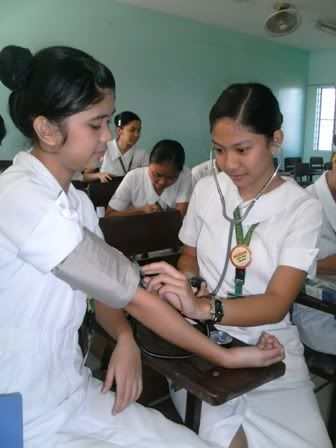- Harish Jharia
Recently I happened to interact with one of my relatives, incidentally a doctor. We had a discussion on hypertension
He said that, at the time of measuring blood pressure the patient is asked to lie-down, outstretched on a flat surface extending the arms at sides of the body at the level of the heart.
Blood pressure is then measured with a small, portable instrument called a Sphygmomanometer

The pressure of the cuff on the arm and artery is then gradually released by the doctor. As the pressure in the cuff decreases, the doctor hears the pulsating sound-beats by placing the sensor of a stethoscope over the artery at the front of the elbow.
• At a particular pressure the flow of the blood circulation starts. The pressure at which the practitioner first hears a pulsation from the artery is called systolic pressure
• As the cuff pressure further decreases, the pressure at which the pulsation finally stops is called diastolic pressure
Blood Pressure observed as "Systolic- 120 / Diastolic- 80", commonly expressed as 120 / 80 is considered normal in a healthy young person.
---------------------------
Disclaimer:
This article / Story / fiction is written based on my personal observations. My intention for publishing the same is to provide healthy reading and intellectual entertainment and not for educating the visitors. Names of people, societies, communities and description of faiths, beliefs, incidents are imaginary and fictitious. They have neither any relevance to the prevailing entities and traditions nor have any similarities with ongoing lifestyles, political ideologies and legal doctrines. The contents of this creative work has not been written with any intention to criticize, condemn or oppose anything what-so-ever present in reality in any country in the world. No literature or authentic books have been referred for writing the contents of this article. The visitors are advised not to refer the contents of this article for any research or testimony on scientific, geographical, political, civic or legal purposes. The visitors are further advised to consult relevant experts before adapting any information from this article. The author or the website are not responsible for any errors, mistakes, or omissions there in.
- Harish Jharia
----------------------------
npad

No comments:
Post a Comment